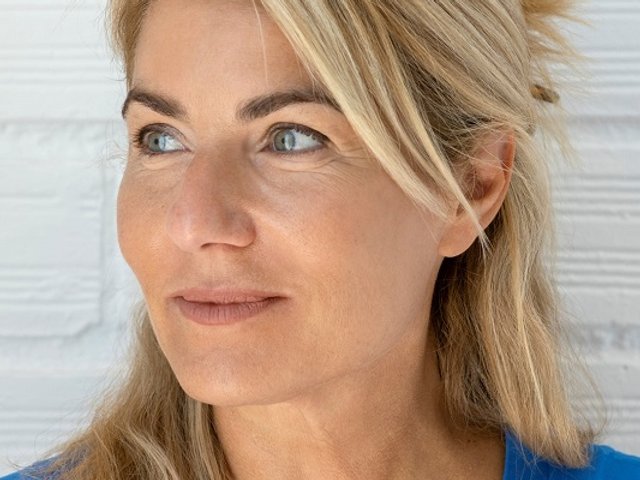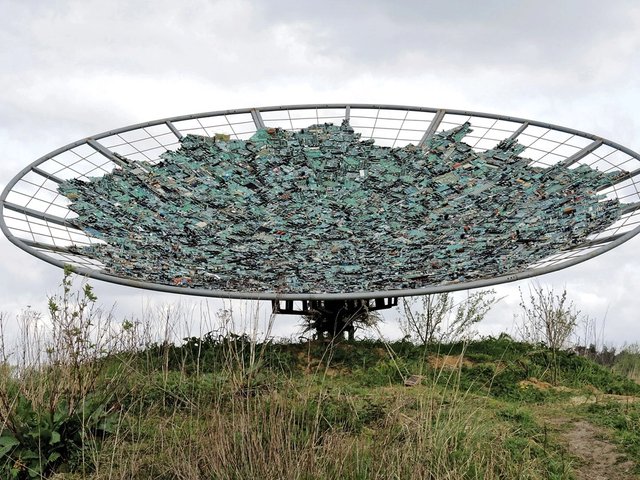The Brussels-based curator Katerina Gregos is too busy for Basel this year. After installing the Belgian pavilion at the Venice Biennale, which opened last month, she is now organising the fifth Thessaloniki Biennale, which opens next week (23 June-30 September).
Gregos, the founding director of Dakis Joannou’s Athens-based Deste Foundation from 1997 to 2002, says that organising the biennial in the northern Greek city has been a challenge. The event will be held against a backdrop of ongoing tension and turmoil after Greece’s central bank warned this week that the debt-ridden country may well exit the European Union. The conceptual framework of the exhibition—which includes works by Marinella Senatore of Italy, Nina Esber of Lebanon and Theo Prodromidis of Greece—reflects the breakdown of society in southern European countries.
The biennale title, Between the Pessimism of the Intellect and the Optimism of the Will, is inspired by an aphorism invoked in the Quaderni del Carcere (The Prison Notebooks) by the Italian political theorist Antonio Gramsci, written while he was imprisoned in Fascist Italy between 1929 and 1935.
Artists are able to engage the so-called “pessimism of the intellect” and envision another way of living by harnessing the optimism of the will, Gregos says. “The duality of this aphorism constitutes a point of departure to talk about how to overcome the current crises that govern the Mediterranean region, which is the geographical focal point of the biennale,” she says.
A red thread runs through it
Gregos is known for presenting socially and politically engaged art, maintaining, as she calls it, a “red thread” in the exhibitions she has organised over the past decade. In 2005, she organised an exhibition on the island of Cyprus with the Turkish curator Erden Kosova that featured 22 international and Cypriot artists. At the time, the show garnered little media attention, but there are signs that it could come to be viewed by curators and scholars as a significant socio-political cultural intervention.
For the exhibition, which was called Leaps of Faith, artists including Susan Philipsz and Kendell Geers made site-specific works for abandoned public spaces, buildings and sites in the divided city of Nicosia and the UN controlled Green Line, which has partitioned the capital of Cyprus since the Turkish invasion in 1974. The exhibition aimed to “encourage an alternative discourse that diverges from the political perspective that has been largely limited to the internal issues surrounding the perennial Cyprus Problem”, the organisers said.
Tackling sensitive issues
Gregos has also tackled feminist issues through exhibitions (Fusion Cuisine, Deste Foundation, 2002); questions of multiculturalism and immigration (Britannia Works, various venues including Ileana Tounta Contemporary Art Centre, Athens, 2004), and freedom of ex * pression (Newtopia: the State of Human Rights, ING Cultural Centre, Brussels, and venues in Mechelen including the Cultural Centre, 2012).
Newtopia, organised in partnership with Amnesty International, traced the complex development of human rights in the post-war era. More than 60 international artists participated, including the Egyptian street artist Ganzeer who created a mural for the wall of the new wing of the City Museum Hof Van Busleyden; the piece focused on freedom of movement after his visa for travelling to Belgium was initially blocked by the Egyptian authorities.
In the same show, the Belgian artist Lieve Van Stappen presented an installation, Esse est Percipe (1999-2012), based on the alleged abuse of children by the Belgian clergy. “Katerina has the nerve to tackle sensitive projects. I felt I was backed by a curator who was as involved as me,” Van Stappen says.
Gregos examined the issue of freedom of speech and the press in more depth at the Venice Biennale in 2011 when she brought together 18 international artists, including two Danish practitioners, Lilibeth Cuenca Rasmussen and FOS (Thomas Poulsen), for the national exhibition in the Danish pavilion.
“I was interested in reflecting the notion of something that is particularly ‘Danish’ through a thematic group exhibition on freedom of speech, an issue of particular relevance and sensitivity in Denmark,” Gregos says.
Is colonialism a thing of the past?
The exhibition, with its mix of international artists, heralded Gregos’s trailblazing presentation in the Belgian pavilion at the year’s Venice Biennale (until 22 November). Eyebrows were raised when the artist list, which features Adam Pendleton of the US and Italian artist Elisabetta Benassi, was announced. The show’s central work is a new video by the Belgian, Vincent Meessen, who has reinterpreted a 1968 protest song written by the Congolese Situationist Joseph M’Belolo Ya M’Piku.
Gregos, as usual, does not shy away from thorny historical topics, saying that the Belgian exhibition challenges the idea that colonialism is something that belongs to the past. “Capitalism and Western prosperity as we know it today would not have been possible without colonialism,” she says. The exhibition challenges the notion of what national representation means, she argues, in this post-national context of fluid, migratory identities.
Gregos bristles, however, at the words “political art”, saying that “they sometimes smack of political propaganda” and insisting that she is plugged into “the relationship between art, poetics, politics and the radical imagination”. How artists convey these facts, “probing issues outside the box beyond dominant stereotypes and narratives”, underpins her thinking.
Surprisingly, she crossed over to the commercial arena when, in 2012, she was appointed as the artistic director of Art Brussels. Her work at the 33-year-old fair, she says, relates exclusively to artistic content and curatorial choices. A section for non-profit organisations run by artists and curators, established by Gregos in 2013, provides a counter-balance to the commercially oriented work on show, she says (this year’s roster included Amsterdam’s Institute for Human Activities).
Gregos acknowledges, though, that fairs provide employment, and a platform and income for artists. “It is a question of how you exercise your ethics in the art market,” she says. “Fairs promote art on a wider level, there is no point in demonising them.”
The Belgian collector Alain Servais says that Gregos has taken the fair in a “promising direction”. He says that “Art Brussels is profiling itself as a discovery fair, featuring the non-profits which are an essential first stepping stone for artists towards recognition but also a lifeblood for creativity”. But he warns that certain collectors do not approve of the drift away from the market towards what he calls “experimentation”. Private and public sector figures will be keen to see how Gregos develops the programme at the fair’s new site next year, the central Taxi & Tours venue, when the number of galleries will be reduced from 190 to 140.



